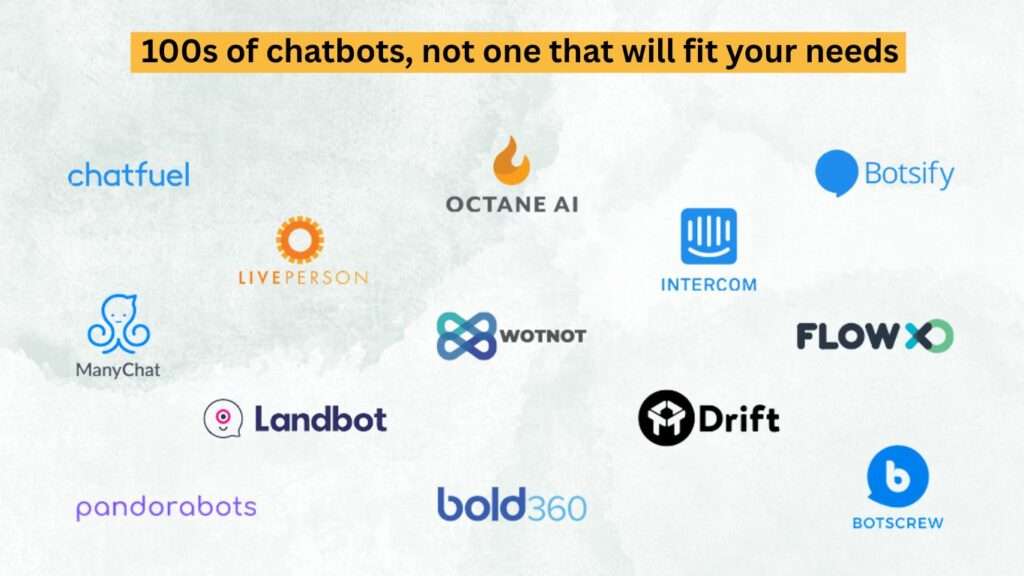Discover seven smart strategies to captivate visitors and reduce bounce rates using Chatbots for a user-friendly online experience!

Navigating the ever-evolving landscape of online business requires a keen understanding of user behavior and a commitment to providing a seamless, engaging experience. At the heart of this challenge lies the bounce rate, a metric that reflects the percentage of visitors who exit a website after viewing only one page. To combat this issue and foster sustained user engagement, businesses are increasingly turning to chatbots. In this comprehensive guide, we’ll explore seven smart tips to leverage chatbots effectively, transforming your bounce rates and elevating your website’s user experience to new heights.
1. Strategic Placement of Chatbots: Guiding Users Where They Need It Most
The first step in harnessing the power of chatbots is strategic placement. Identifying pages with historically high bounce rates is crucial. These pages often signal areas where visitors struggle to find information or face challenges in navigating the content. By strategically placing chatbots on these pages, businesses can intercept potential bounce situations, providing timely assistance and improving the chances of retaining visitors.
Consider the homepage, landing pages, or product pages as prime locations. A well-placed chatbot can act as a virtual guide, offering assistance and relevant information, thereby encouraging visitors to explore further.
2. Personalized Greetings and Conversations
A chatbot’s ability to initiate a conversation with a personalized touch can significantly impact user engagement. Rather than a generic greeting, tailor the chatbot’s welcome message to the specific page or user demographics. Leveraging data analytics is essential in understanding user behavior and preferences, enabling the chatbot to initiate conversations with context.
Imagine a scenario where a user arrives on a product page. Instead of a standard greeting, the chatbot could say, “Welcome to [Your Brand]! Looking for something specific? I’m here to help you find the perfect [Product Category].”
This personalized approach creates a more human-like interaction, capturing the user’s interest and setting the tone for a positive and engaging conversation.

3. Clear and Concise Messaging
The effectiveness of a chatbot hinges on its ability to communicate clearly and concisely. Users should effortlessly understand the information provided by the chatbot, without feeling overwhelmed or confused. To achieve this, break down information into digestible bits, avoiding lengthy paragraphs or complex language.
The goal is to guide users through the conversation smoothly, addressing their needs and queries without causing cognitive overload. Clear communication fosters a positive user experience, reducing the likelihood of users bouncing due to frustration or confusion.
4. Interactive and Visual Elements
While text-based interactions are the foundation of chatbots, incorporating interactive and visual elements can elevate the user experience. Implement buttons, quick-reply options, and multimedia content to make conversations more engaging. Visual aids can help convey information more effectively, keeping users interested and preventing premature exits.
Consider a scenario where a user is exploring a travel website. The chatbot could offer interactive buttons for popular destinations, allowing the user to explore options with a simple click. Integrating visual elements such as images or videos can further enhance the chatbot experience, providing a richer and more interactive engagement.
5. Seamless Integration with Website Design
A chatbot should seamlessly integrate with your website’s design, acting as a natural extension rather than a disjointed element. Choose a design that aligns with your brand identity and overall website theme. The goal is to create a cohesive user experience, where the chatbot complements the website’s design without standing out as an intrusive feature.
Consider factors such as color schemes, fonts, and placement to ensure the chatbot feels like an integral part of the website. A harmonious integration encourages users to interact with the chatbot without hesitation, fostering a sense of continuity in their online journey.

6. Provide Value Through Proactive Suggestions
A proactive chatbot goes beyond responding to user queries; it anticipates their needs and provides value through proactive suggestions. Utilize data analytics to understand user behavior and preferences, enabling the chatbot to offer relevant recommendations or information before the user even asks.
For instance, if a user is browsing a fashion website, the chatbot could proactively suggest matching accessories or inform the user about ongoing promotions. By offering value before the user explicitly seeks it, businesses can keep users engaged and satisfied, reducing the likelihood of premature exits.
7. Continuous Monitoring and Optimization
Implementing chatbots is not a one-time effort but an ongoing process of improvement. Regularly monitor chatbot interactions, analyze user feedback, and track bounce rates over time. Use this data to identify areas for improvement and optimize the chatbot’s responses and functionality.
Consider implementing A/B testing to assess different chatbot approaches and messages. Solicit user feedback through surveys or direct interactions to understand their experience and any pain points. By continuously optimizing the chatbot based on real-time data, businesses can ensure that it remains an effective tool in reducing bounce rates and enhancing overall user engagement.
Conclusion:
In the fast-paced digital landscape, where user expectations are high and attention spans are fleeting, businesses must employ innovative solutions to optimize user engagement and combat high bounce rates. Chatbots, when strategically placed and thoughtfully designed, become powerful tools in this endeavor. By personalizing greetings, ensuring clear communication, incorporating interactive elements, seamlessly integrating with website design, providing proactive suggestions, and continuously optimizing, businesses can transform their chatbots into user-friendly assistants.
Embrace these seven smart tips to harness the full potential of chatbots, reduce bounce rates, and create a more successful and engaging online presence. As technology and user expectations evolve, staying attuned to user needs and refining chatbot strategies will be key to sustaining success in the competitive digital landscape.
For more such amazing content follow us here!





